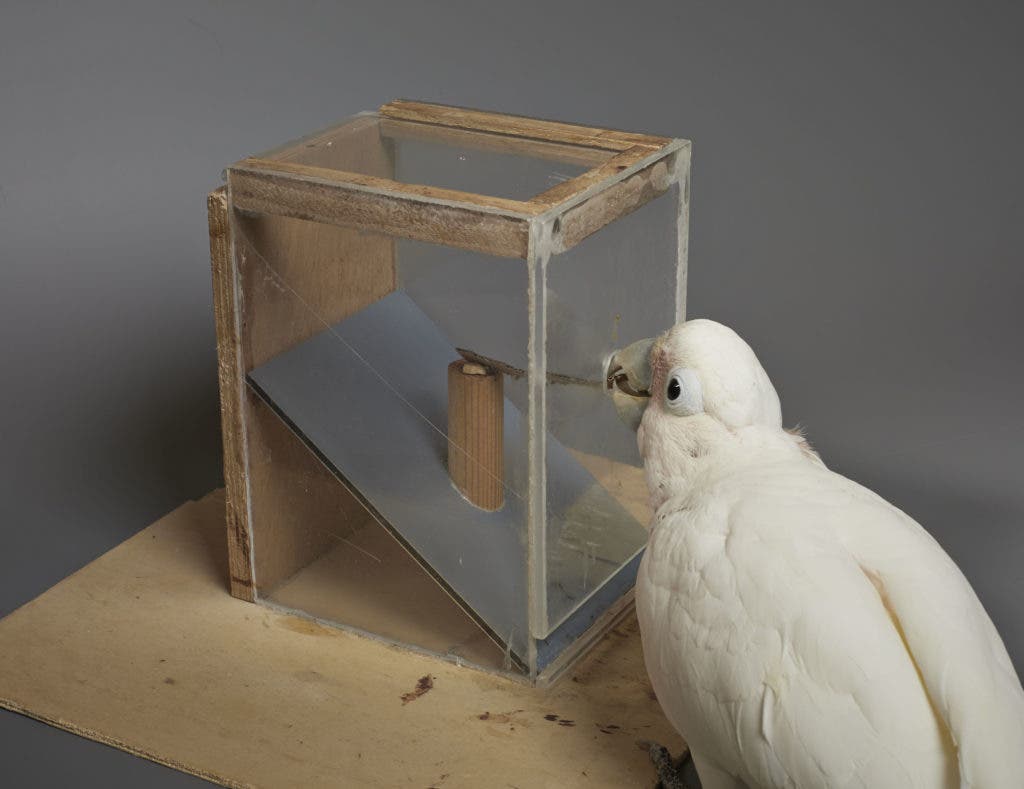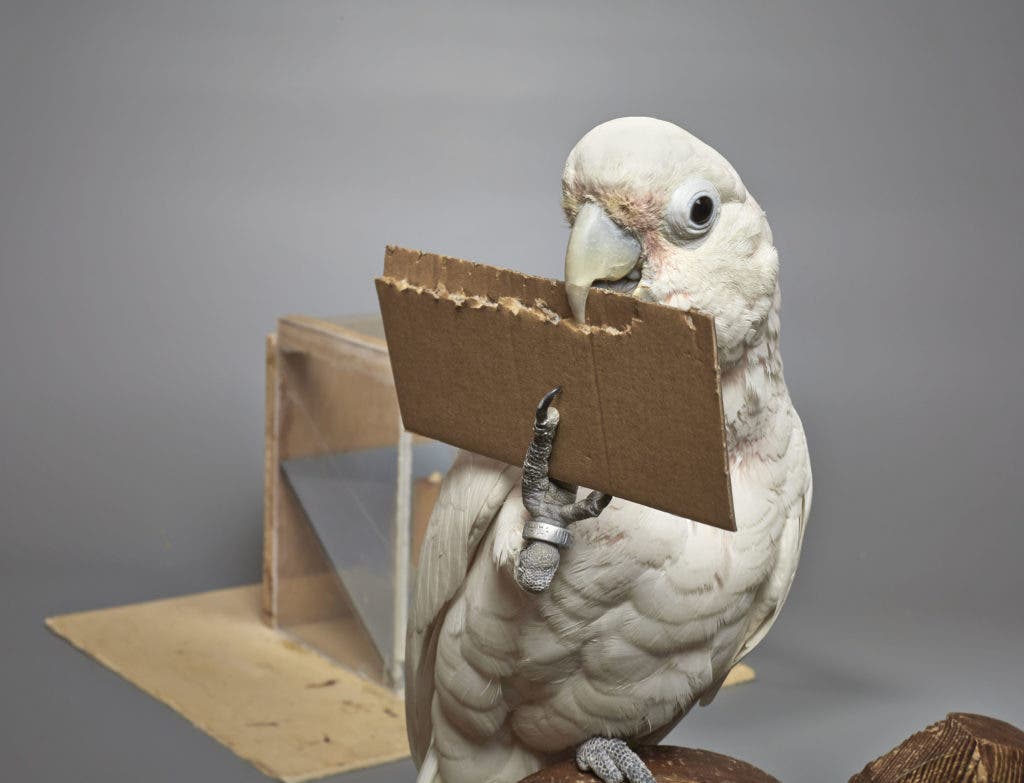Goffin cockatoos are able to tear pieces of cardboard and build basic tools from them — which places them in a very select group of animals.

The Goffin’s cockatoo (Cacatua goffiniana) is a type of parrot native to Indonesia — and a smart one at that. In the recent study, researchers supplied six adult cockatoos with large cardboard sheets to tear, which they could tear into strips to use as tools. The testing setup was a food platform with rewards set at varying distances (4-16cm), behind a small opening which also varied in width (1-2cm).
The Goffins were quick to adapt to the task, and they were able to tear strips of different sizes based on how far away the food was. In every case, if a first-attempt tool was too short, the cockatoos would adapt and build a longer tool. The birds consistently made tools a bit longer than they needed to be, and the tools also became longer and longer as the study progressed — which researchers interpret as a way to minimize the risk of the tool being too short, which would not have yielded any reward. Having a tool that was too long did not come with a major drawback.
It’s not just cardboard; the birds were found to be able to develop tools from a wide array of materials, Alice Auersperg, study leader, adds. Here, cardboard was chosen because it made the cockatoos work harder to create longer tools.
“The reason that we choose cardboard is because they have to place a lot of parallel bite marks in order to gain length,” Auersperg told ZME Science. “This means that that we have a relatively continuous increase in effort. If we had them bite a splinter out of wood or break off twigs from a tree for this experiment the increase in effort for a longer tool will not be as obvious.”
However, things were different when the opening became narrower and narrower. When the opening was only 1 cm wide, just one bird was able to reach the reward. However, this might not have anything to do with intelligence, but rather with beak ergonomics.
“The bird that succeeded in the smallest opening was the only female we tested, it turned out she had a smaller beak and thus found it easier to make slimmer tools. Thus we believe that she succeeded for ergonomic reasons,” Auersperg explains.

Auersperg adds:
“The way they inserted and discarded manufactured pieces of specific lengths differently depending on condition suggests that the cockatoos could indeed adjust their tool making behavior in the predicted direction but with some limits in accuracy. “
This isn’t the first study to highlight the intelligence of these cockatoos. In November 2012, Aursperg observed a captive bird called Figaro shaping splinters of wood and small sticks and using them as rakes to get otherwise inaccessible food. Further studies at the same facility showed that the birds are able to pass the Stanford marshmallow experiment — they were able to resist the temptation of an immediate reward for a later, more substantial reward. In 2013, cockatoos at Aursperg were also showed to be able to solve complex mechanical problems, in one case spontaneously working out how to open a five-part locking mechanism in sequence to retrieve a food item.
It’s not clear yet how much of these abilities are related to being captive. In an email to ZME Science, Auersperg said that they are comparing the innovative capacity of wild versus captive birds, and already have some “quite interesting results”, though the results are still a work in progress.
“They are an island species from a small archipelago in Indonesia where we have been studying them for the past two years as well. On the island, they are opportunistic extractive foragers, which means that they may often have to innovate novel ways to open food sources.”
At any rate, much like previous studies on crows, this goes to show that we really misjudged birds and their intellectual capacity.
The study has been published in PLoS ONE.


